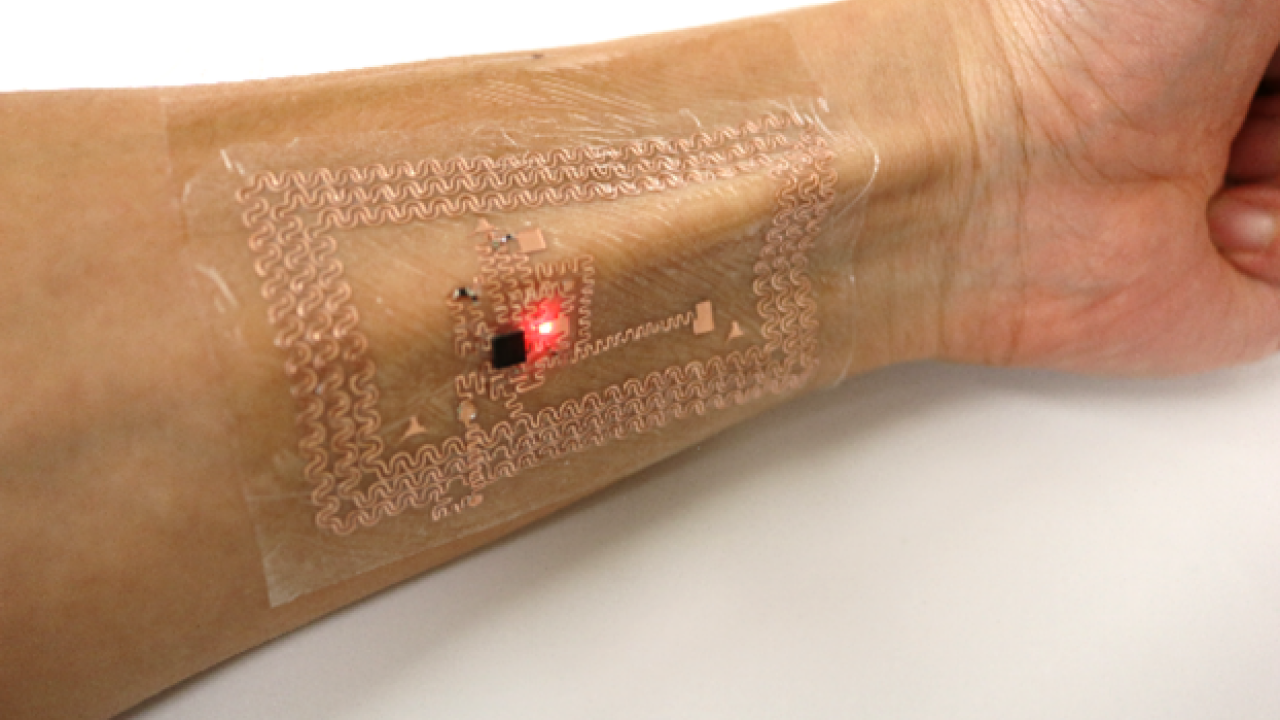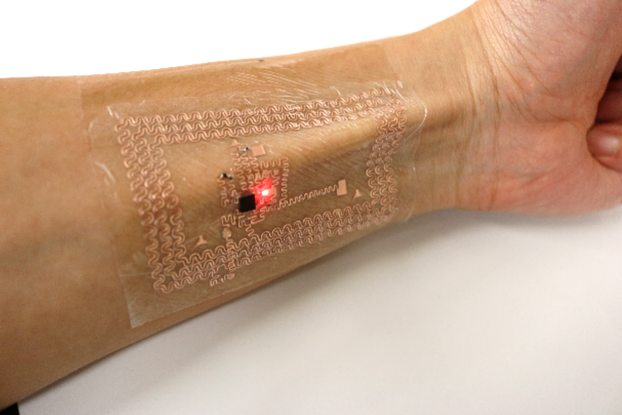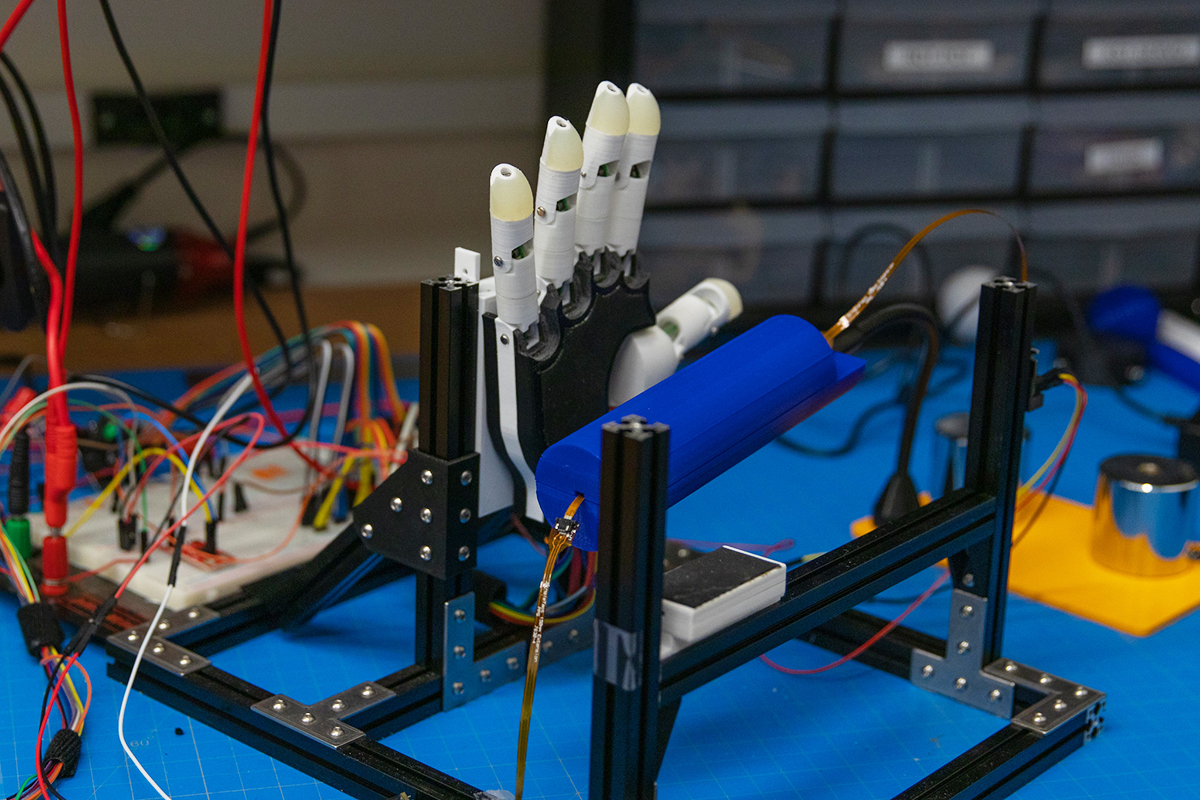
Smart Nails, Talking Tattoos and Advanced Prosthetics
Wearable Technology in the College of Engineering
Fashion is a powerful tool to express ourselves and our relationship to others. Wearable technology pushes that even further, advancing the human body’s potential through non-invasive augmentation of our abilities, from enabling us to communicate with devices with facial gestures to keeping track of our vital signs. Here are four intelligent wearables woven into reality by researchers in the College of Engineering.
Well-Dressed Intelligence

The classic image of a cyborg, or an organism composed of human and machine parts, is cold and monstrous, like the antagonistic Borg species in “Star Trek” or the hero in 1987’s “RoboCop.” That picture couldn’t be further from the innovations in the Interactive Organisms Lab at the University of California, Davis, which researches and develops devices that enhance the human body through smart beauty technologies. Led by computer scientist and assistant professor of design Katia Vega, a leading voice on wearable technology, the lab has produced accessories like mushroom-based necklaces, bracelets and crowns with embedded electronics and acrylic nails that can communicate with your smartphone.
One recent project in the lab was led by Shuyi Sun, a graduate student in the Department of Computer Science, who is designing facial jewelry that can turn a blink of an eye or an eyebrow raise into various wireless commands to discreetly do tasks such as turning down lights or sending messages.
A Conductor on a Loom?

Materials like yarn, wool and cotton are soft but durable enough to transform into sweaters and slacks, whereas machine components are hard-wearing but inflexible. What if that were to change, and electrical and hardware components became part of our daily clothes? That is what Biological and Agricultural Engineering Distinguished Professor You-Lo Hsieh’s group advanced, researching biologically derived one-dimensional nanomaterials for novel conducting fibers, aerogels, thin films, and nanocomposites. While their recent review highlighted promising prospects for wearable applications of these conductors, from embedded sensors to wearable heaters, the team concluded that much more research is needed to develop them at an industrial scale.
Tattoos that Talk (Health Data, That Is)

Biomechanical tattoos, or designs that create the illusion of the body as a series of gears, cables and other machinery, are one thing, but how about tattoos that are electrical in their own right? Hyoyoung Jeong, an assistant professor in the Department of Electrical and Computer Engineering, developed just that: a wireless, skin-interfacing device dubbed the e-tattoo that functions as a personalized health monitor. The battery-free e-tattoos connect to a patient’s skin and are made of multiple thin layers, such as a slim circuit and sensor layer, that can wirelessly transmit health data in real time. The constant flow of data on things like someone’s heartbeat could significantly improve medical care by providing a better picture of someone's vital signs. The wearable technology is also highly adaptive, both to the needs of individuals and in its applications; in addition to disease monitoring, Jeong has applied his technology to track vocal fatigue and scratching habits for adults with dermatitis, among others.
An Open-Source Hand and a Mind-Reading Arm

Assistant Professor Jonathon Schofield is progressing the field of prosthetics. In his Bionic Engineering and Assistive Robotics Laboratory, or BEAR Lab, part of the Department of Mechanical and Aerospace Engineering, Schofield has helped develop the BEAR-PAW, an open-source prosthetic hand capable of complex movement for children 8 years and up (find the code and hardware specs on GitHub). Through the project, Schofield and his team of researchers at UC Davis and the Shriners Children’s Hospital hope to understand the muscular capabilities of children born with limb differences and to develop highly functional prosthetics for them, as prostheses made for adults or children who have lost limbs present separate and more established challenges.
He is also part of a joint effort at UC Davis and UC Davis Health to develop smart prostheses that use machine learning to read signals from reinnervated nerves, or nerves that have been reconnected to remaining muscle tissue, rather than severed in an amputation. These devices have the capability of decoding the user’s intentions to move their missing limb by measuring the reinnervated muscles’ contractions and using this to carry out actions like bending a prosthetic elbow or making different grasping motions to hold objects — advancements that stand to revolutionize and simplify the process individuals go through to adapt to their prosthetic limbs.




